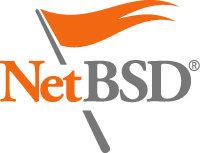This page gives a brief overview of the light-desktop features. It is a quick getting started guide.
Run it
Currently the main packages are in pkgsrc-wip.
Install the wip/light-desktop metapackage. On NetBSD, this will also install the netbsd-light-desktop-default-settings package.
It uses DBUS: /etc/rc.d/dbus start
The desktop file monitoring needs glib2 built with kqueue support or as an alternative uses FAM (install gio-fam, and run /etc/rc.d/rpcbind start; /etc/rc.d/famd start)
Run it via your .xinitrc or .xsession: start-netbsd-light-desktop
(One known issue depends on glib2 version. An unlock of already unlocked mutex. Reported upstream. See light-desktop-todo.)
Test it
- Install xephyr or xnest and run it with the ":5 -ac" switches.
- export DISPLAY=127.0.0.1:5
- start-netbsd-light-desktop
Introduction
- The pcmanfm file manager controls the desktop. Files in ~/Desktop are displayed as icons.
- .desktop files in the ~/Desktop are used as application launchers.
- The window manager is openbox; but right click menu is controlled by pcmanfm by default.
- Right-click on desktop can choose Desktop Preferences which can change wallpaper and more.
- The taskbar aka panel is on the bottom.
- Left button on taskbar is the menu.
- Right-clicking on a menu entry gives you the option to add to the desktop.
- .desktop files installed on system should be automatically used for menu entries.
- To add menu entry, just add foo.desktop file to ~/.local/share/applications/.
- To change menu entries (or categories), go to menu of applications, and right click on item and choose Properties. (This runs the lxshortcut editor.)
- The Run command will change icon and do type-ahead if it recognizes beginning of command entered.
- Right click on the panel for "Panel Settings".
- Panel settings allow you to resize and position the panel, change its appearance, added choices to the panel, and more.
- You can have multiple Application Launch Bars on the panel which can be configured to add various applications for quick launch via button on panel.
- The panel also has launchers for file manager and browser; minimize all button, pager, taskbar, clock, and shutdown button.
- The Monitor Settings via Preferences on menu offers a xrandr-based GUI.
Running programs are:
- dbus-daemon
- dbus-launch
- openbox
- pcmanfm
- menu-cached
- lxsession
- lxpanel
Various keys are custom controlled by openbox. Not tested yet and has some controls not installed yet.
Normal Desktop
This is not complete yet
The reference implementation of the desktop also offers:
- nm-applet embedded in notification area; to show and configure wired and wireless connections and detected networks.
- xfce4-power-manager to show battery state in notification area.
- shutdown button runs logout gui: suspend, hibernate, logout, cancel
The reference implementation of the desktop also runs:
- xscreensaver
- policykit-1-gnome/polkit-gnome-authentication-agent-1
- /usr/lib/xfce4/xfconf/xfconfd
- gvfsd
- update-notifier
- notification-daemon
- gvfs-fuse-daemon
- gconfd
- gvfs-gdu-volume-monitor
- gvfs-afc-volume-monitor
- gvfs-gphoto2-volume-monitor
